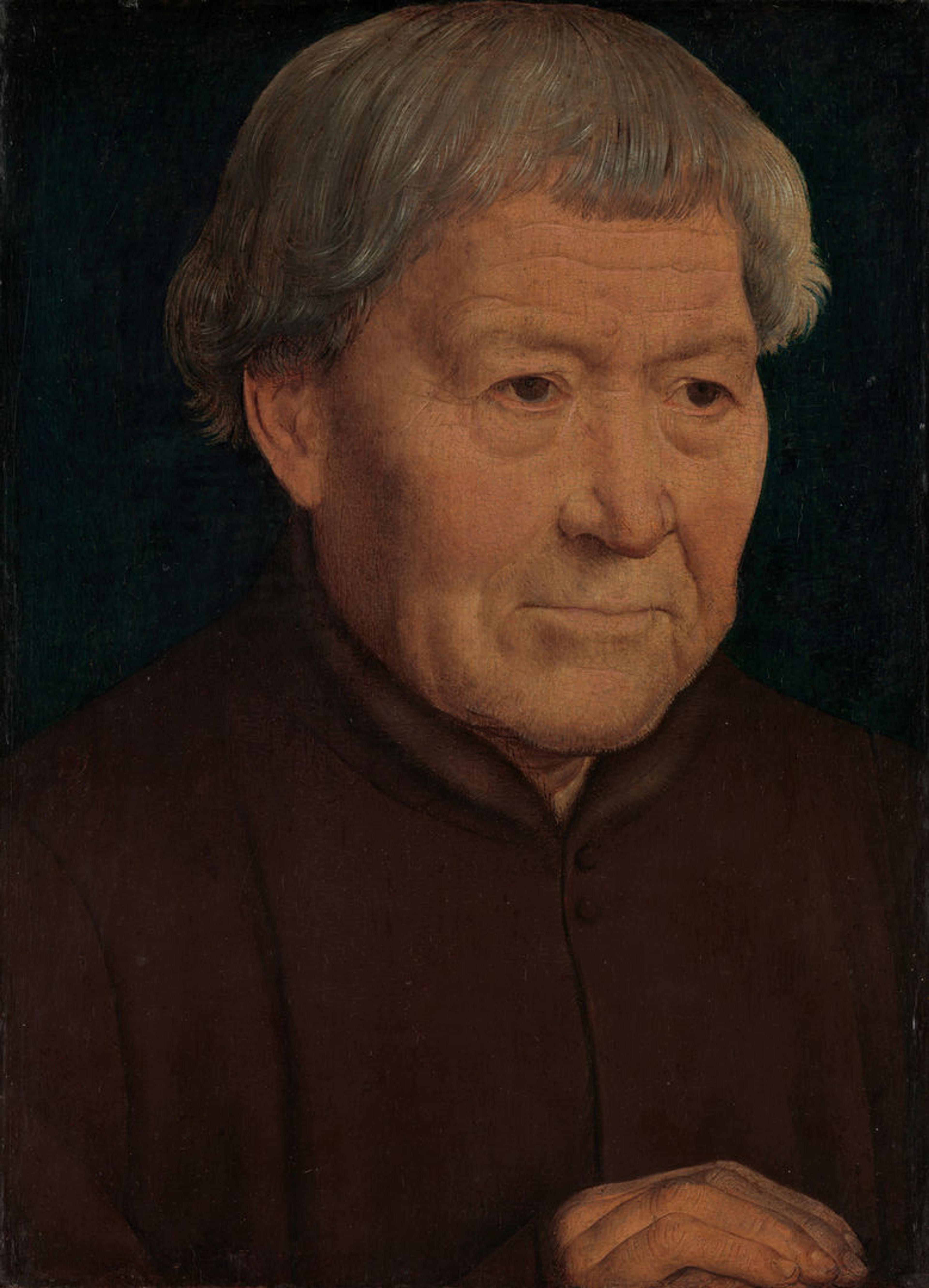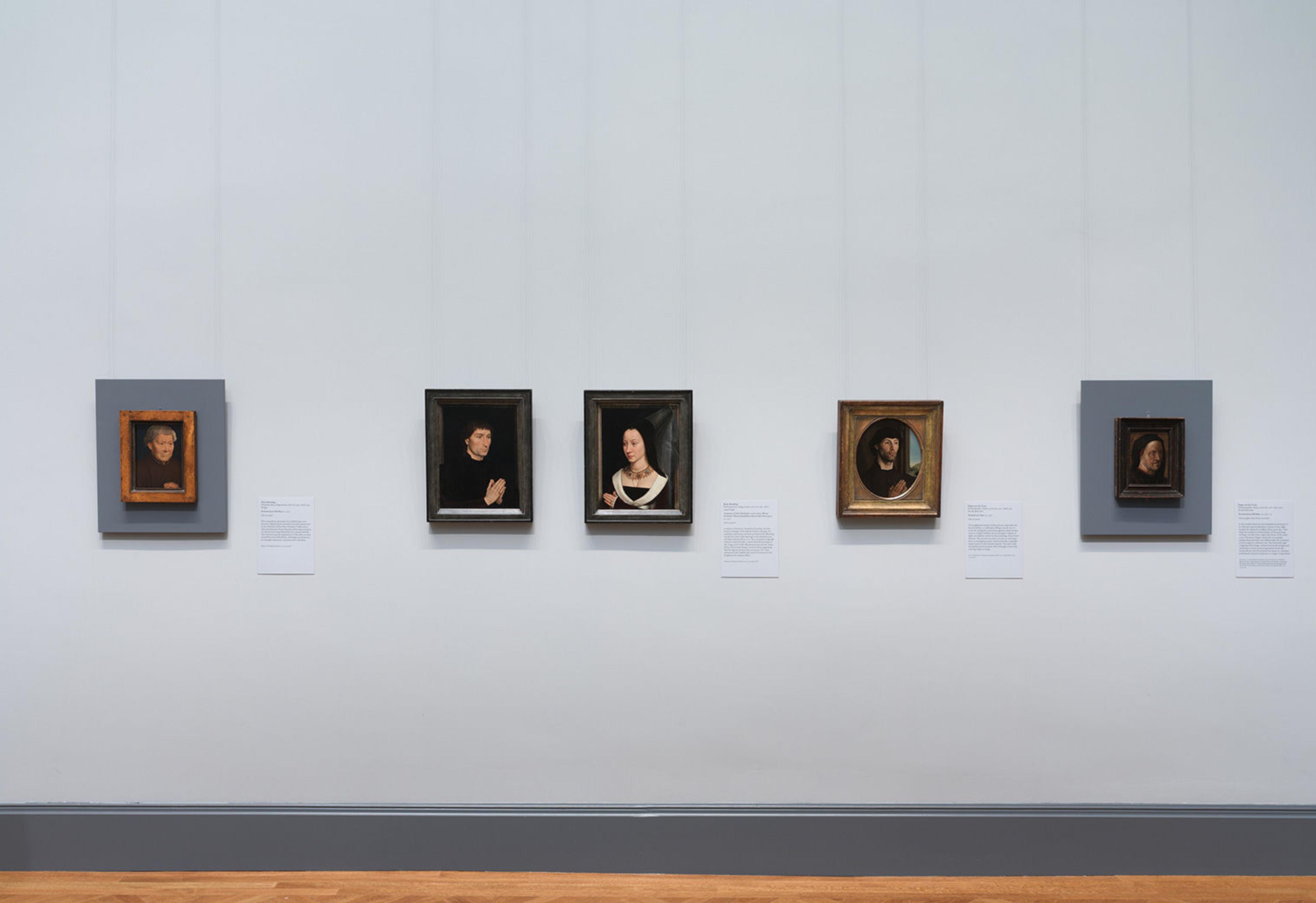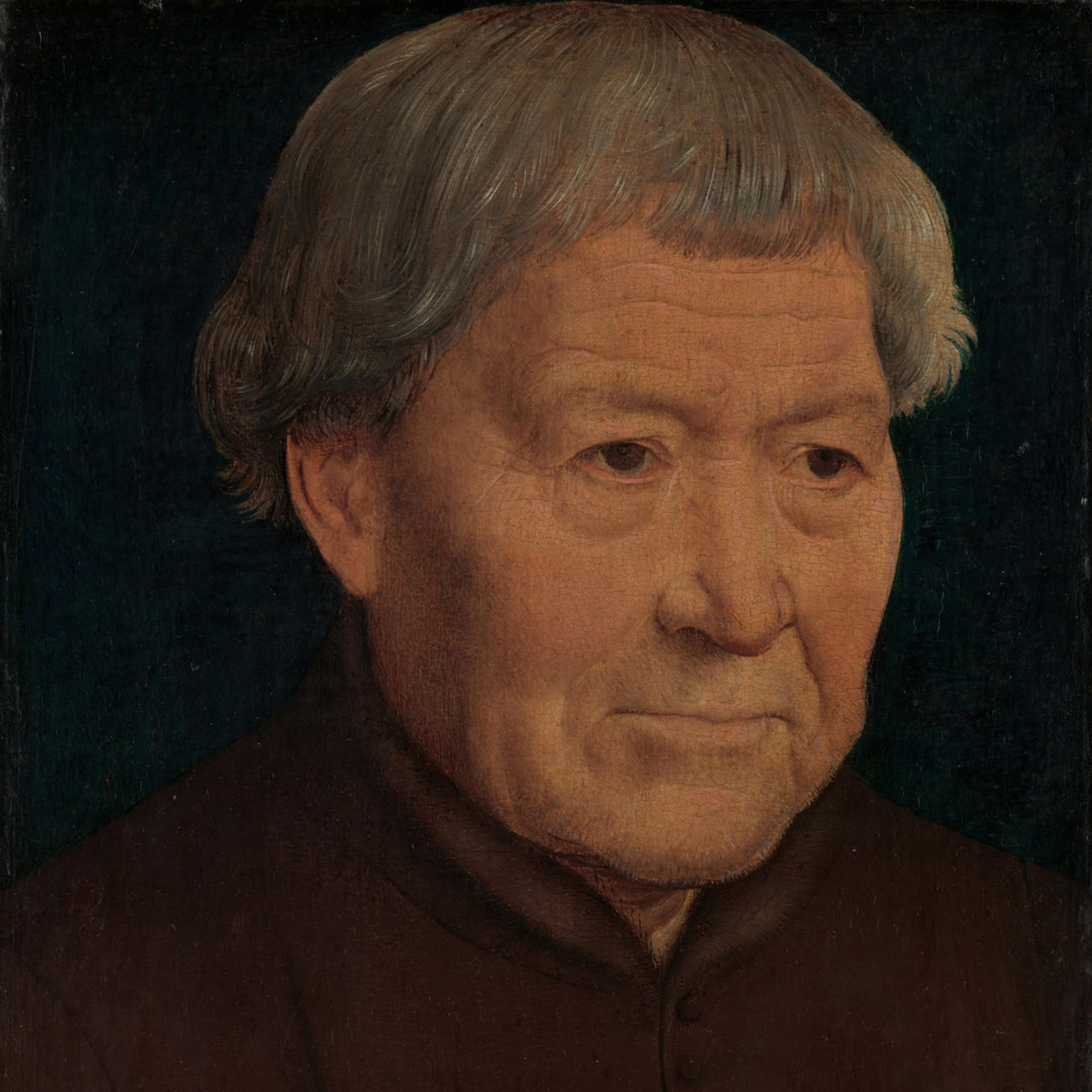It is the face of a humble man, secure in his own skin and radiating kindness to others, to us, from across the centuries, as time and space is collapsed in this encounter. The man does not confront the viewer with his glance, but gazes out of the frame, to the world. And we feel as if we could very well turn away from this portrait and find a corollary to this face in one of the other viewers in the room with us, a man with graying hair and chin stubble, with soft eyes looking at pictures. The man in this picture wears a simple brown coat with a bit of fur trim, and his hands are placed right over left at the bottom of the frame, as if leaning into the room to join us.

Hans Memling (Netherlandish, active 1465–1494). Portrait of an Old Man, ca. 1475. Oil on wood, 10 x 7 1/4 in. (25.4 x 18.4 cm). The Metropolitan Museum of Art, New York, Bequest of Benjamin Altman, 1913 (14.40.648).
They say we are given a face at birth that we must live with initially, but by a certain age, we make our own face and then we must live with that. The man in this portrait appears to be in his late sixties, and since the life expectancy at that time was about sixty-nine years, this man was probably on an intimate basis with his own mortality. He has been through some things and known some pain, but he is still searching, and still open to what may come. Just by looking, we feel that we know this man. All in all, this depiction of him is so direct and immanent that it takes our breath away.
This gallery, Gallery 602 in the European paintings galleries, is titled “Faces of the Renaissance,” and most of the portraits in the room are identifiably from the fifteenth century, including as they do markers of the sitter’s rank and class and social standing. In contrast to the Portrait of an Old Man (ca. 1475), the social identities of Tommaso di Folco Portinari (the branch manager of the Medici bank in Bruges) and his bride Maria Maddelena Baroncelli are on full display in a very different pair of portraits by Memling that also hangs in this gallery.

View of Hans Memling's Portrait of an Old Man (14.40.648) in Gallery 602, November 2023. Also depicted at right: Hans Memling's Tommaso di Folco Portinari (1428–1501); Maria Portinari (Maria Maddalena Baroncelli, born 1456); Hugo van der Goes's Portrait of a Man; and Hugo van der Goes's Portrait of an Old Man
But Memling’s Portrait of an Old Man is out of time, and markers of his social identity have been withheld. He is not a monk, even though his hair is almost tonsured by the top cropping of the frame and his hands are folded but not joined palm-to-palm in prayer. And there are no pictorial clues to his station or location in the brownish blue-green background of the portrait. The head covering and dress of his wife, in her portrait that may have been attached to his but is now separated and residing in Houston, is more coded but still not probative.
This portrait of an old man preempts our current insistence on identity as the ultimate measure of existence and value. Who is this old man? We don’t know. Is he a Florentine patron? A Netherlandish businessman? Or just an old man soon to be separated from his partner?
This portrait of an old man preempts our current insistence on identity as the ultimate measure of existence and value. Who is this old man?
Art historians have called this panel painting Portrait of an Old Man, compared with the Portrait of a Young Man (ca. 1472–75) by Memling from about the same time that hangs in Gallery 953. The young man looks to the left of the viewer as the old man looks to the right, but their poses are very similar, with hands resting on the bottom of the frame. The young man’s face is open, too, but unmarked by experience, while the somewhat distressed surface of the old man’s portrait and its rough wooden frame are appropriately consequent with the subject.
Since this particular portrait pair was probably not part of a triptych, with the portraits flanking a central devotional image of a religious scene, these portraits were not primarily intended to accentuate and highlight the piety and devotion of the two sitters (in the Renaissance version of “virtue signaling”), thus giving Memling license to portray a different sort of face.
I fell in love with Memling’s fifteenth-century portraits after seeing them first in European collections, especially in Italy, in the 1980s, and it made sense to me that these gems were rediscovered in the nineteenth century when photographs provided a clear contrast with these handmade images, but also a clear affinity in their verisimilitude. Now, in the age of selfies and facial recognition software and AI and deepfakes, these portraits assert themselves as a completely different kind of representation and expression of being human. In this extraordinary portrait, the singularity of one old man’s face paradoxically also makes it universal, in the recurring magic of transfiguration.
